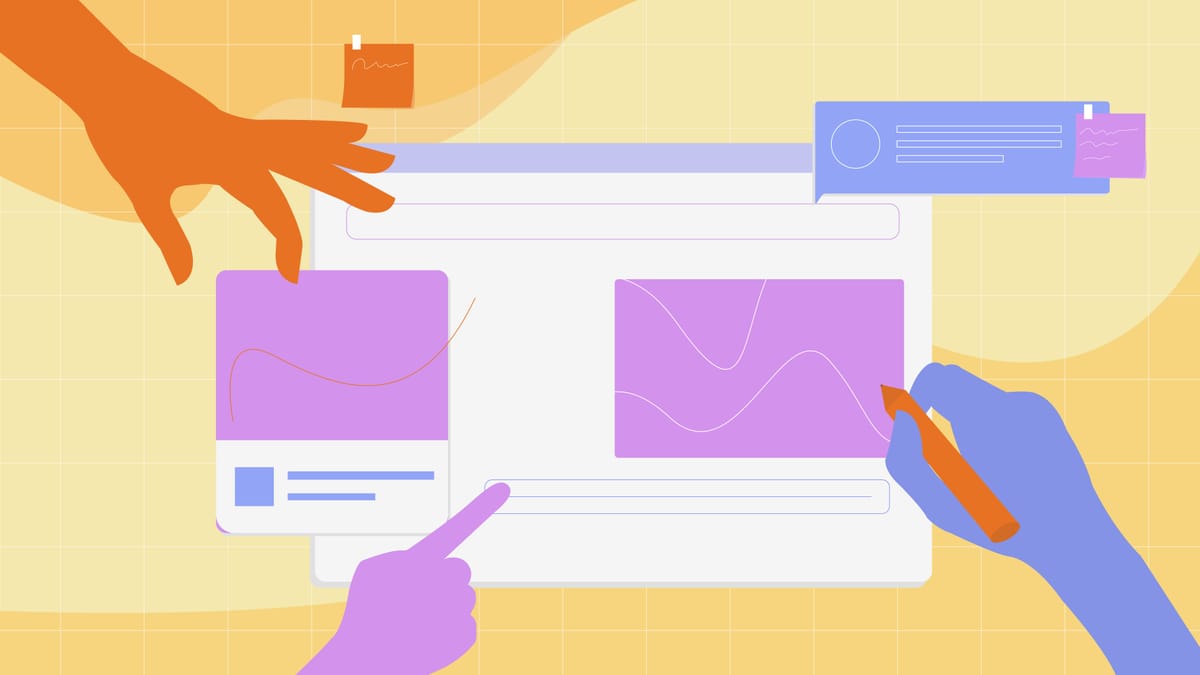Campaign: Energy-Efficient Website
Communicating the idea for a campaign directed at reducing energy use in digital applications – by paying more attention to file size in web development.

Final Assignment Part 2. Also read Part 1.
Student: Per Axbom
Instructor: Camila Emboava Lopes
May 21, 2023
Having worked professionally with digital development for more than 25 years I keep seeing many areas for improvement when it comes to the energy-use of everyday websites. Some of these issues are often very easy to act on and implement, but as most people are unaware of their potential they remain unaddressed and receive inadequate attention. My campaign idea is directed at digital agencies, public sector and news websites, encouraging simple acts of energy efficiency that will help them improve energy-use. Quick and tangible improvements can soon be seen as a badge of honor.
This campaign primarily addresses UN Sustainable Development Goal #7: Affordable and Clean Energy (United Nations, n.d.). The mission is to reduce energy use and thereby contribute to affordable and sustainable energy.
Secondary goals addressed are:
- SDG #10: Reduced Inequalities. In many countries internet access can be costly and each megabyte counts. By reducing the file size of websites more people will be able to afford using them, and will have access to more content.
- SDG #12: Responsible Consumption and Production. By bringing attention to the costs of poorly built digital solutions we can promote the development of better services, and also encourage individuals to make better decisions based on this information.
The problem with digital data
When it comes to the climate crisis and limiting emissions, most attention today is directed towards the automobile, aviation and energy industries. Processing of digital data is already on par with these industries and is likely to see significant growth with the advent of AI-technologies and big data processing, on top of normal use (the digital storage of an ever-increasing amount of photos, images, reports and personal data that are never deleted).
It is estimated that data centres are responsible for 2–2.5 per cent of all human-induced carbon dioxide, meaning they may already have a greater global carbon footprint than the aviation industry, estimated to be around 2.1 per cent. (Jackson & Hodgkinson 2022)
A large portion the data kept in data centres is what is known as dark data, while I would prefer the more descriptive term wasteful data. This refers to data that is collected and stored but will never be looked at or used again. Still, significant amounts of energy are required to keep this purposeless data in storage as long as no one makes a decision to remove it.
Potential for immediate improvement in use of images and photos
The second reason we see a lot of unnecessary energy-use is simple inefficiency. Data is not compressed or stored in a format that takes the least amount of space.
A very concrete example is the image format WebP, a format that was first released in 2010 by Google. While most people are familiar with JPEG, GIF and PNG formats, the new image format can replace all of these. WebP maintains the quality of equivalent images in other formats but can reduce file size by around 30%, and sometimes more. This has benefits when storing the original image, but is also beneficial by extension when the image is copied and downloaded by user devices when surfing the web. Speed is increased, and less storage space is required on personal devices.
Campaign: Energy-Efficient Website
The idea behind Energy-Efficient Website is to promote data efficiency and a minimum of data retention in two very easy-to-understand messages.
- Minimise the file size of images in all web publishing.
- Regularly move archived data to an external storage that is kept unplugged when not in use.
The target group for the campaign are:
- Digital agencies that produce and maintain many apps and websites for their clients across a year. Given their leading role in the production of new assets, they are also in a position to clearly understand the problem space and contribute to a significant change in normal operations. Digital agencies are generally also involved in building the websites of the 2nd and 3rd target groups.
- Public sector websites. They can be held accountable for their energy-use and have a clear obligation to reduce the climate impact of their operations.
- News websites. Often attracting large amounts of data traffic, there is generally an enormous potential to improve energy-use for online media outlets.
Each of these target groups will be helped to understand how they can be a force for change with minor tweaks in their everyday work. From a persuasion paradigm this can be expressed as follows:
“The task of communication is to persuade people to modify practices through informational campaigns intended to correct and expand knowledge and attitudes.” (Waisbord 2014, 149)
The idea is to take this concept further and combine strategic communication with participatory communication, into collective action (Waisbord 2014). The target groups will themselves be encouraged to find their own way of setting and achieving goals, as well as reporting on their progress.
Naming the problem and creating accountability
Through the use of the term Energy-Efficient Website we give name to something that few people are aware of as a climate issue. This sparks interest and awareness.
“Naming something can increase the number of people who are aware of it as a problem worthy of their attention.”
(Tinga, Murphy & Sessou, 145)
By making public sector websites a target of the campaign it is possible to boost social accountability.
“Social accountability is sometimes referred to as the ‘demand side of good governance,’ as it is based upon the active involvement of citizens in demanding accountability from their elected representatives and leaders.” (Wildermuth 2014, 373)
This is a powerful concept linked to key agendas of communication for social change. It is in the interest of all citizens that the public sector websites make use of resources in the best possible way (both with regards to money and energy-use) and creating awareness on current weaknesses and opportunities will encourage the demand of good governance such as transparency, public opinion and deliberation around this topic.
The news media opportunity
In their paper on a global media resource model, Hollifield and Schneider (2020) introduce the concept of resource macrodimensions. Specifically, this campaign addresses demands within the areas of audience attention, gratifications obtained and production inputs. By allowing media outlets to recognise these opportunities they will be further motivated to participate on the premise of the campaign.
- Audience attention. By providing a more resource-efficient website more people can access the content without unnecessary load on their own devices or any bandwidth constraints.
- Gratifications obtained. Fewer readers will need to turn off images on their devices (due to cost or low-bandwidth connections) and will receive higher value from richer content.
- Production inputs. With a reduced load on resources required for publishing and maintaining online material, more actors will be able to participate as contributors to the media industry.
These gains are all valid from a democracy perspective and will appeal not only to media organisations but also to digital agencies and public sector stakeholders.
Execution
The core messaging for the campaign is expressed on a single website that can be produced within the timespan of one week. The background, problem and opportunity are expressed in brief, impactful statements. Target group representatives are invited to sign a manifesto that clearly indicates how they support the intent and actions required in striving for an Energy-Efficient Website.
By becoming a signatory each actor professes to work in alignment with the actions outlined. This allows them to showcase their support for sustainable approach to digital service development, and incentivises them to begin talking more broadly about how they ensure efficient use of resources in digital development.
A badge can be offered for download that each signatory can use on websites and presentations to bring attention to an assumed ethical and sustainable way of working. This way the organisations themselves become advocates and ambassadors for the messaging of the campaign, encouraging more signatories, and sharing how they work to reach their goals. This is in alignment with participatory communication (Waisbord 2014) and contributes to keeping campaign costs down.
In summary
A simple easy-to-understand call-to-action encourages target group actors to make small changes that can provide a significant impact on energy-use, as well as create more general awareness and boost . The campaign will be cost-efficient as signatories of the campaign will themselves aid in spreading the message about their own actions towards an Energy-Efficient Website, as it becomes in their own interest to do so through social accountability. This also serves to communicate "the allocation of responsibility to specific sectors, corporations and even political institutions and related actors" (Weder 2020, 233).
The campaign can be ongoing and be extended with more relevant action items (Greenwood 2019) as interest for the concept of Energy-Efficient Website grows over time.
References
- Jackson, T & Hodgkinson, I.R. (2022). '‘Dark data’ is killing the planet – we need digital decarbonisation', The Conversation, September 29, viewed on May 18, 2023. <https://theconversation.com/dark-data-is-killing-the-planet-we-need-digital-decarbonisation-190423>
- Greenwood, Tom (2019). '20 ways to make your website more energy efficient', Wholegrain Digital, October 23, <https://www.wholegraindigital.com/blog/website-energy-efficiency/>
- Hollifield, C.A. & Schneider, L (2020). 'A Global Media Resource Model: Understanding News Media Viability Under Varying Environmental Conditions'.
- Tinga, T., Murphy, P. & Sessou, E.S (2020). 'ICTs, Environmental Activism and Community Mobilization in Sub-Saharan Africa'. In J. Diaz-Pont, P. Maeseele, A. E. Sjölander, M. Mishra & K. Foxwell-Norton (eds.), The Local and the Digital in Environmental Communication, pp. 129-149. IAMCR/Palgrave.
- United Nations (n.d.). 'Global Sustainable Development Goals'. United Nations, viewed on May 18, 2023. <https://sdgs.un.org/goals>
- Waisbord, Silvio (2014). 'The Strategic Politics of Participatory Communication'. In K. Gwinn Wilkins, T. Tufte, R. Obregon, The Handbook of Development Communication and Social Change, pp. 145-167. John Wiley& Sons, Inc.
- Weder, Franzisca (2020). Sparking an Interest in Local Water Issues: Social Media as an Enabler for (Hyper)local Community Engagement in Environmental Issues and the Role of Solution Journalism. In J. Diaz-Pont, P. Maeseele, A. E. Sjölander, M. Mishra & K. Foxwell-Norton (eds.), The Local and the Digital in Environmental Communication, pp. 223-245. IAMCR/Palgrave.
- Wildermuth, Norbert (2014). 'Communication for Transparency and Social Accountability'. In K. Gwinn Wilkins, T. Tufte, R. Obregon, The Handbook of Development Communication and Social Change, pp. 370-392. John Wiley& Sons, Inc.
Also read

More on photo storage






Comment